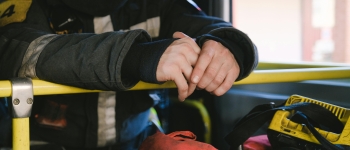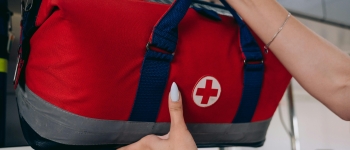Campus Emergency Phones/Call Boxes:
- Emergency phones and call boxes are directly linked to the Campus Police Department.
- Emergency phones and call boxes are labeled and located throughout campus buildings, parking lots, and pathways.
- Emergency phones and call boxes are monitored 24 hours a day.
Emergency Phones are labeled on the SF State campus map with an E symbol. To view the online map, please see the SF State Map Page.
What You Need to Know
Sheltering in Place is a protective action taken inside a building to protect the building occupants from external hazards, minimize the chance of injury, and/or provide the time necessary to allow for a safe evacuation. Circumstances that may warrant a shelter-in-place action could include:
- Severe Weather
- Civil Unrest
- Active Threat (see Active Threat)
- Heavy Smoke
- Toxic Gases or Particulates

Practice general safety precautions at all times. Familiarize yourself with the Emergency Preparedness information provided on this website. If you observe any suspicious activity on campus, immediately contact University Police at 9-1-1 or use campus Emergency Phones. Call (415) 338-7200 for a non-emergency and if you are using a cellular telephone.
Emergency Alerts and Safety Notifications
The notice to Shelter-In-Place will be issued by emergency personnel from University Police or the Emergency Operations Center and can be received in many ways. Building emergency personnel may receive notice to Shelter-In-Place or a notice may be sent using our campus-wide Emergency Notification System via text messaging, email, cell, and other phones numbers you have listed.
Shelter-In-Place Guidelines
- Stay inside the building and avoid windows. Move to inner corridors or rooms for protection.
- For extreme weather, relocate to lower levels of the building if possible.
- Stay inside and move to an inner corridor or office to reduce exposure.
- Close all windows and turn off air conditioning and fans to limit the infiltration of contaminants.
- If possible, move to higher levels of the building. Many chemical agents are heavier than air and tend to stay closer to the ground.
- Avoid moving around if it increases your risk (e.g., using external staircases or opening exterior doors).
- Make a list of who is in your room and report any injuries or symptoms immediately.
- Check your SFSU email and text messages regularly for updates and further instructions.
- Stay where you are until emergency personnel notify you that it is safe to leave.
- Select a small interior room with no or few windows
- Close and lock all windows and exterior doors
- Turn off all fans, heating and air conditioning systems, and close the fireplace damper
- Bring your family disaster supply kit (link is external) and make sure the radio is working
- Bring your pets into your shelter area
- It is ideal to have a hard-wired telephone in the room you select (cellular telephone equipment may be overwhelmed or damaged during an emergency)
- Use duct tape and plastic sheeting (heavier than food wrap) to seal all cracks around the door and any vents into the room (during biological, radiological, or chemical exposure)
- Listen to your radio or television for further instructions and updates
- Close all windows.
- Turn off vents and air conditioning to prevent outside contaminants from entering the vehicle.

